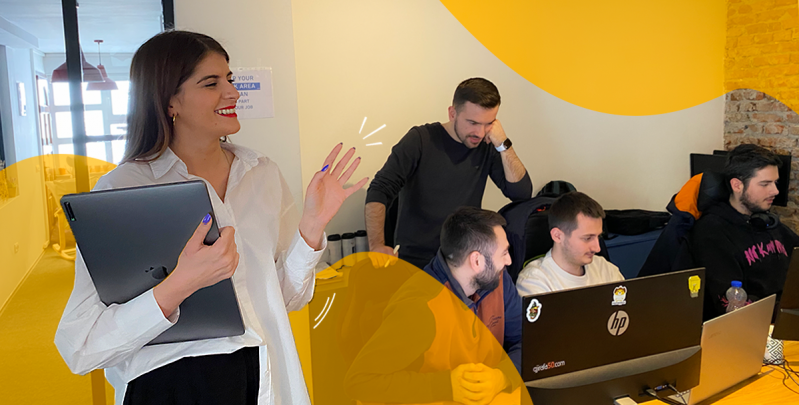The role of communication in a software company

“Being a Project Manager is like being an artist: Processes full of different colors that when combined, create a work of art.” – were the words I received the day our CEO gave to the team a quote of motivation he chose for each of us to begin 2021 in a very positive way.
At first, I didn’t really analyze that written text, but after five minutes, my mind just swiped. “For real, the job of a PM is a piece of art itself. Having a team with colorful personalities makes it a masterpiece. For me, it’s an artwork that is mandatory in my life. It fulfills me and makes my mornings worth waking up for.”- is what got set up on my mind.
Good morning stars! – Is how I like to begin explaining my morning! These are the first words I say every time I enter the office and share the first coffee of the day with my teammates. It rather continues with a song or a joke, but it is important that the day begins right.
Gathering in the morning mostly means complaining about how some of us didn’t sleep or how sleepy we were. But, our daily goal stays the same – a productive day and teamwork. In the chain of success, these two key elements are parallel as the front-end and the back-end are in programming. If not connected properly together – the project will fail, and if combined perfectly – the project will flourish.
It is also the same as you combine the coding language with the skills of each person in the company. They are all different, but together they can give functionalities of different kinds.
However, one of the most important skills to project management is the one that underlies all of these others: Communication.
Seeking a successful project management
Successful project management communication is about being there for everyone. Additionally, being in touch with the real challenges of the project as well as understanding the real issues within the team who must deliver the project. It means being present, visible and engaged with everyone – during the good times and the challenging times.
In Kutia, we do exactly the same thing. We spend 8 hours per day together. Each step requires some new tasks to talk about, and those tasks depend on another task, decision, or person. Good communication, by ensuring key players are aligned on project goals. Knowing exactly what’s expected of them will keep conflict and confusion from bogging your project. Also, providing your team with all communication tips including listening, respecting your team, emphasizing efficiency over speed, digging into details, and keeping everyone in the loop, will help you stay close to your team and teach them to stay united through ‘thick and thin’.
We also want to be sure that we make it easy for the team to access and share information. We encourage them to ask for more when needed by using emails, meetings, discussion boards, and collaboration apps.